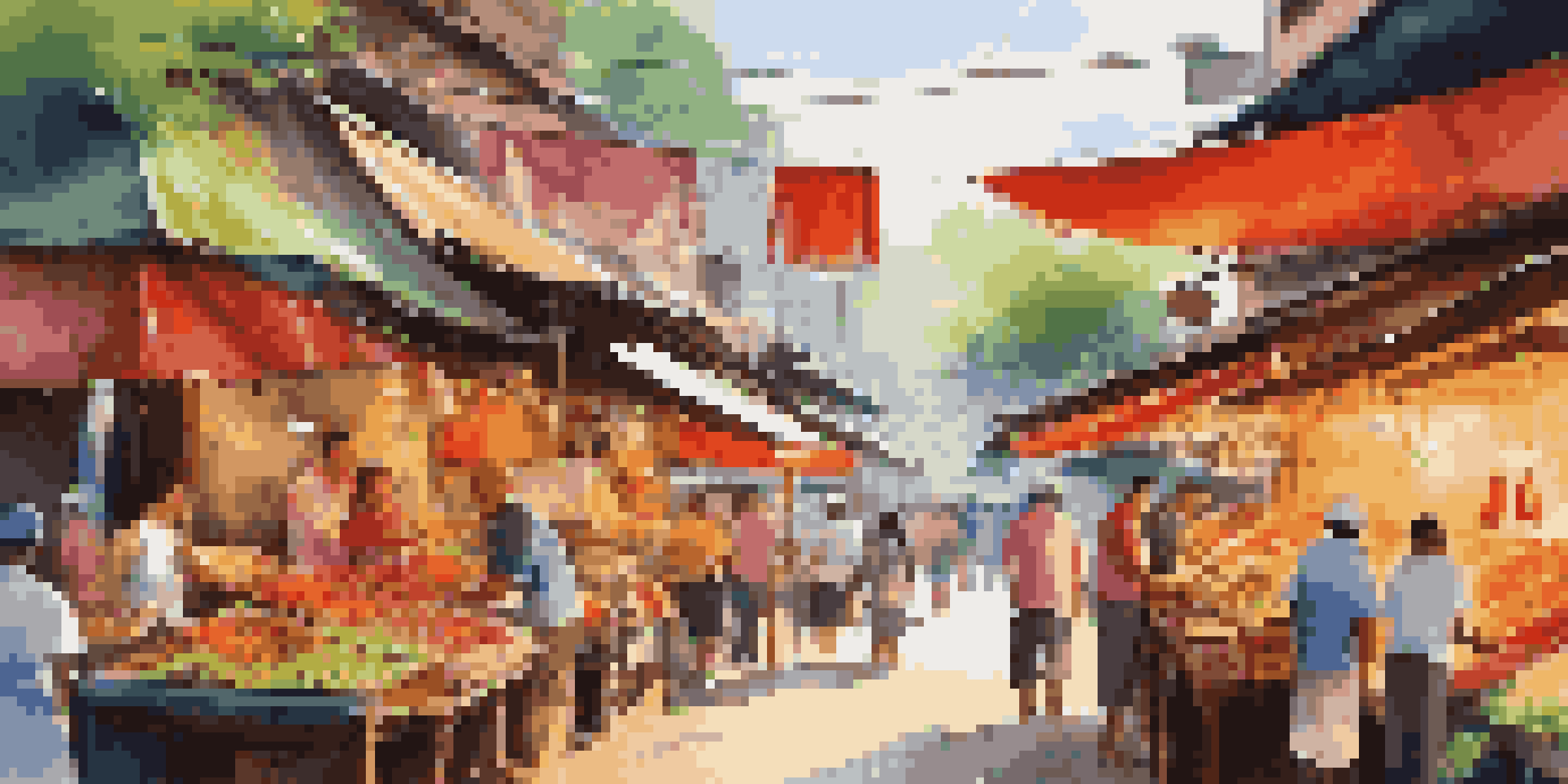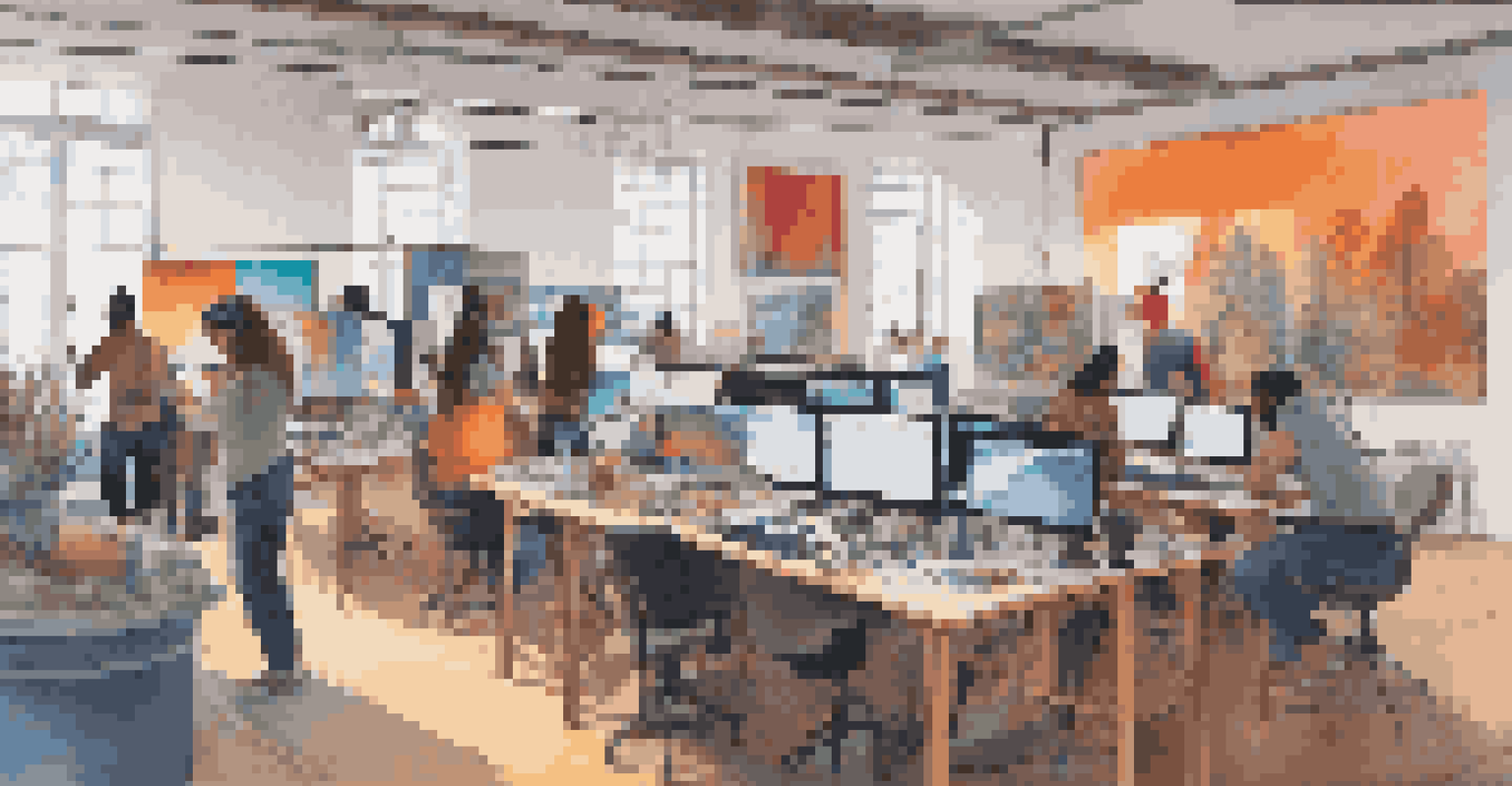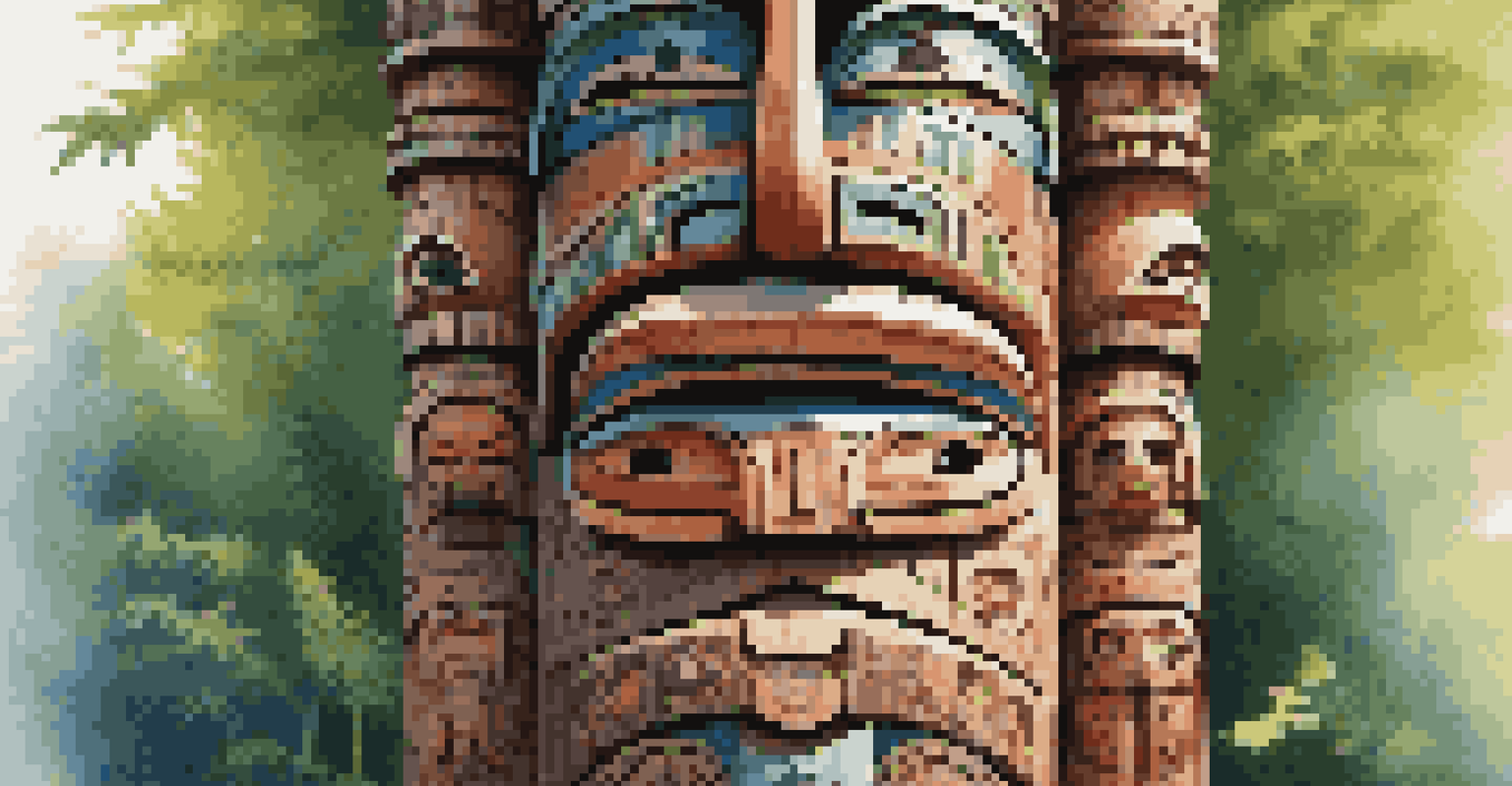Traveling Through Art: A Visual Exploration of Global Cultures

Art as a Universal Language: Connecting Cultures Globally
Art has an incredible ability to transcend language barriers, allowing people from different cultures to connect. Whether it's a vibrant painting or an intricate sculpture, art speaks in a way that words sometimes cannot. This universal language invites us to explore and understand the stories and emotions behind various cultural expressions.
Art is the most beautiful of all lies.
For instance, consider how the intricate patterns in Moroccan tile work tell tales of history and tradition. Each design is not just an aesthetic choice but a narrative woven into the fabric of Moroccan identity. Viewing art from different cultures enables a deeper appreciation of their unique journeys and experiences.
By engaging with art from around the world, we foster empathy and understanding. This visual exploration highlights not only the differences among cultures but also the shared human experiences that unite us, reminding us that we all have stories worth telling.
Exploring Indigenous Art: Voices from the Past
Indigenous art often serves as a powerful reminder of cultural heritage and ancestral wisdom. Each piece carries historical significance, reflecting the beliefs, practices, and struggles of indigenous peoples. From Aboriginal dot paintings in Australia to Native American pottery, these artworks provide insight into the rich tapestry of global cultures.

Take, for example, the intricate carvings of totem poles by Native American tribes. These totems not only represent clan lineage but also serve as storytelling devices, passing down legends and cultural values to future generations. Engaging with such art helps us appreciate the deep-rooted traditions that continue to shape contemporary identities.
Art Connects Cultures Globally
Art transcends language barriers, allowing people from diverse backgrounds to share their stories and emotions.
Through the lens of indigenous art, we discover the importance of preservation and respect for cultural narratives. Every artwork tells a story that has survived the test of time, urging us to listen and learn from those who came before us.
The Impact of Colonialism on Artistic Expression
Colonialism has left a profound mark on the art world, influencing how cultures represent themselves and are represented by others. The clash of cultures often led to a fusion of artistic styles, creating new forms of expression. Understanding this history is crucial in appreciating the complexities of global art.
Every artist dips his brush in his own soul, and paints his own nature into his pictures.
For instance, the impact of European colonialism on African art resulted in a blend of traditional motifs with Western styles. This hybrid art not only reflects the resilience of the affected cultures but also their ability to innovate in the face of adversity. Exploring these artworks allows us to acknowledge and honor the narratives shaped by colonial histories.
By examining the effects of colonialism on art, we gain insight into the ongoing dialogues about identity, power, and representation. This exploration encourages us to critically engage with art and its role in shaping cultural narratives.
Modern Art Movements: A Global Perspective
In the 20th century, modern art movements emerged as a response to societal changes, often reflecting the complexities of cultural identity. Movements like Surrealism, Cubism, and Abstract Expressionism have roots in various global contexts, highlighting the interconnectedness of artistic innovation. This period showcases how artists draw inspiration from their surroundings and experiences.
For example, consider the influence of African art on Pablo Picasso's work. His exposure to African masks led to the development of Cubism, demonstrating how cross-cultural exchanges can redefine artistic boundaries. By tracing these modern art movements, we can appreciate the diverse influences that shape contemporary art.
Indigenous Art Preserves Heritage
Indigenous art reflects cultural heritage and ancestral wisdom, offering insights into the struggles and traditions of its people.
Exploring modern art invites us to consider how artists express their identities in a globalized world. It reveals the dynamic nature of art, which continuously evolves and adapts to reflect the complexities of human experience.
Culinary Art: A Delicious Reflection of Culture
Culinary art is often overlooked in discussions of cultural expression, yet it plays a vital role in showcasing traditions and values. Each dish tells a story of heritage, geography, and community, making food a tangible representation of culture. From the spices of Indian cuisine to the simplicity of Japanese sushi, culinary art invites us to savor and appreciate diversity.
Consider the vibrant street food scene in Thailand, where each vendor offers a unique take on traditional recipes. This culinary exploration not only satisfies our taste buds but also immerses us in the local culture, allowing us to connect with the people and their stories. Food becomes a vehicle for cultural exchange, fostering understanding through shared experiences.
By exploring culinary art, we celebrate the creativity and innovation that arise from blending flavors and techniques. It highlights the importance of food as a cultural expression and encourages us to engage with traditions that are often passed down through generations.
Digital Art: Bridging Global Cultures in the Modern Age
In today's digital age, art has found a new canvas that transcends geographical boundaries. Digital art enables artists to connect and collaborate with others worldwide, creating a vibrant, global community. This accessibility allows diverse cultural expressions to flourish in the online realm, showcasing the richness of human creativity.
Platforms like Instagram and DeviantArt have become hubs for artists to share their work, breaking down barriers that once limited exposure. For example, artists from different backgrounds can collaborate on projects, resulting in innovative works that blend styles and cultural influences. This digital landscape fosters a sense of unity and collaboration among artists worldwide.
Art as a Tool for Activism
Art serves as a powerful medium for activism, enabling artists to raise awareness and inspire social change through creative expression.
By embracing digital art, we not only witness the evolution of artistic expression but also the ways in which cultures can interact and influence one another. It's a reminder that art is a living entity, continuously evolving in response to the world around us.
Art and Activism: Visual Voices for Change
Art has long served as a powerful tool for activism, enabling artists to express their beliefs and advocate for social justice. Through visual mediums, artists raise awareness about pressing issues, drawing attention to injustices and inspiring action. This intersection of art and activism highlights the role of creative expression in driving societal change.
For instance, street art has emerged as a prominent form of protest, with murals and graffiti conveying messages of resistance and hope. Artists like Banksy use their work to challenge societal norms, sparking conversations about inequality and human rights. Engaging with activist art encourages us to reflect on our own values and the role we play in fostering change.

By exploring the relationship between art and activism, we recognize the profound impact that creative expression can have on society. It reminds us that art is not just for appreciation but can also serve as a catalyst for dialogue and transformation.